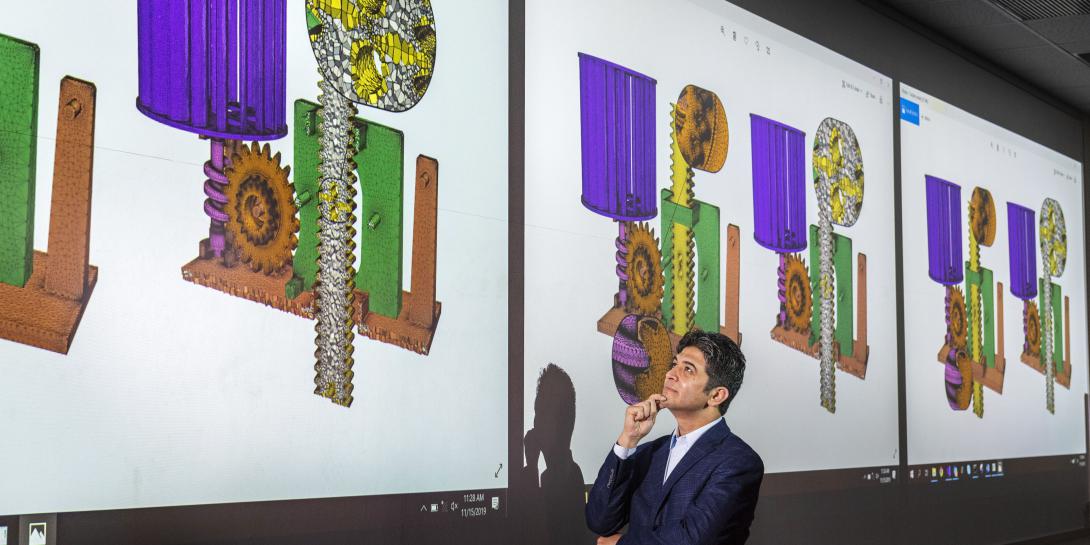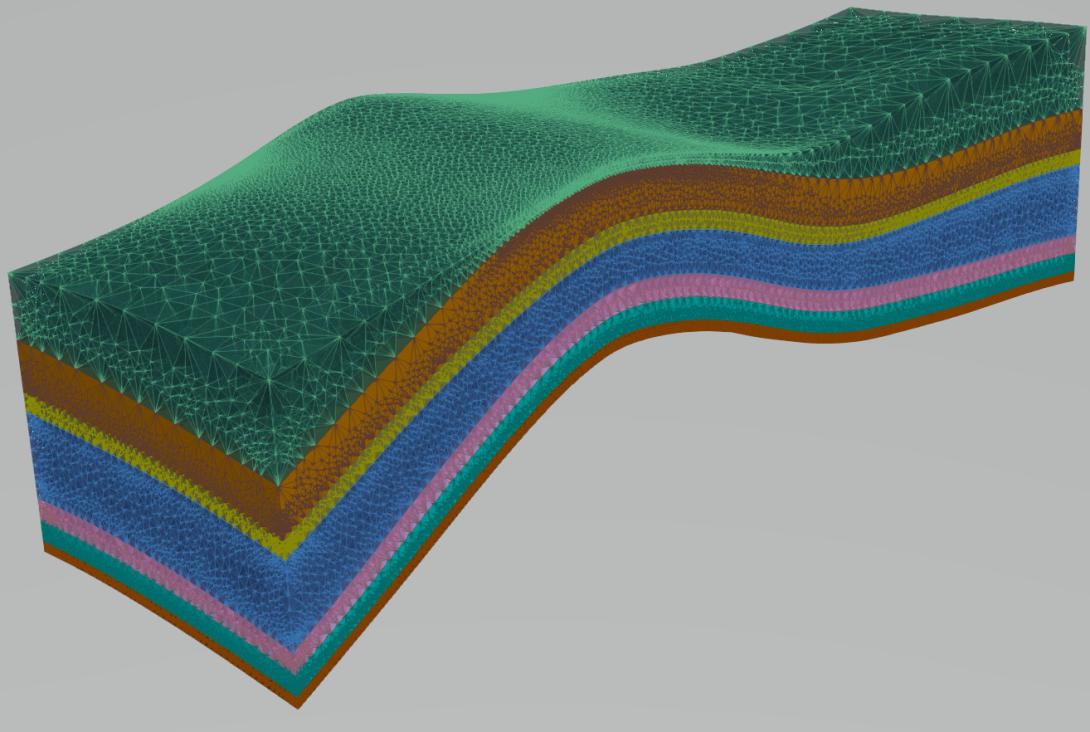Software Automates Complex 3D Modeling
A team of researchers has invented software to create accurate digital representations of complex objects. VoroCrust enables scientists to create these “meshes” and use them in many disciplines that work with geometric models of all kinds of parts, from rotors to wheels to protective equipment.
Complex meshes often have curves, sharp edges or holes. Once created, they look like 3D images that can be used in computer simulations that incorporate algorithms to determine when parts might fail in extreme conditions. This is a helpful aspect of design prior to creating prototypes and parts for real tests.
For example, a scientist in the aerospace industry might make a mesh of an airplane wing and run it through a computer simulation to learn more about what will happen to it in high wind and extreme temperatures. Some scientists also use meshes to model geology to anticipate underground changes, such as subsurface flows of liquids or contaminants.
VoroCrust incorporates special types of 3D polyhedral cells called Voronoi cells to create the meshes, explains Sandia National Laboratories computer scientist and project lead Mohamed Ebeida. A few other government agencies and universities are currently testing it.
It is the first software to generate Voronoi-cell meshes that conform to complex models without needing to be fixed manually, Ebeida says. “Sandia identified meshing as the single biggest bottleneck in these analyses. Current practices require human intervention, and VoroCrust provides us with a path toward automating this process to relieve tech staff by reducing the time spent on fixing computer-generated errors in modeling.”
The software was developed in collaboration with the University of Maryland, College Park, the University of Texas at Austin and the University of California, Davis.
Ahmed Abdelkader, a doctoral student at the University of Maryland, worked on VoroCrust with Ebeida and described the advantages of using Voronoi cells. “The facets are cleaner, like gemstones or diamonds. They can perfectly and naturally fit together,” Abdelkader says.
Sandia manager Emily Stein and research engineer Tara LaForce have used VoroCrust to make geological models for deep disposal of nuclear waste as part of the Department of Energy’s Spent Fuel and Waste Science and Technology Campaign that Sandia leads.
Two priorities of the campaign are to create design concepts and numerical modeling approaches for disposal systems. VoroCrust might create a mesh of an underground repository and the waste in it, or it could create a mesh of the underground geology.
Ebeida says while the research problem of creating geometric meshes has been solved, the technical readiness of the software cannot yet be used off the shelf.







Comments